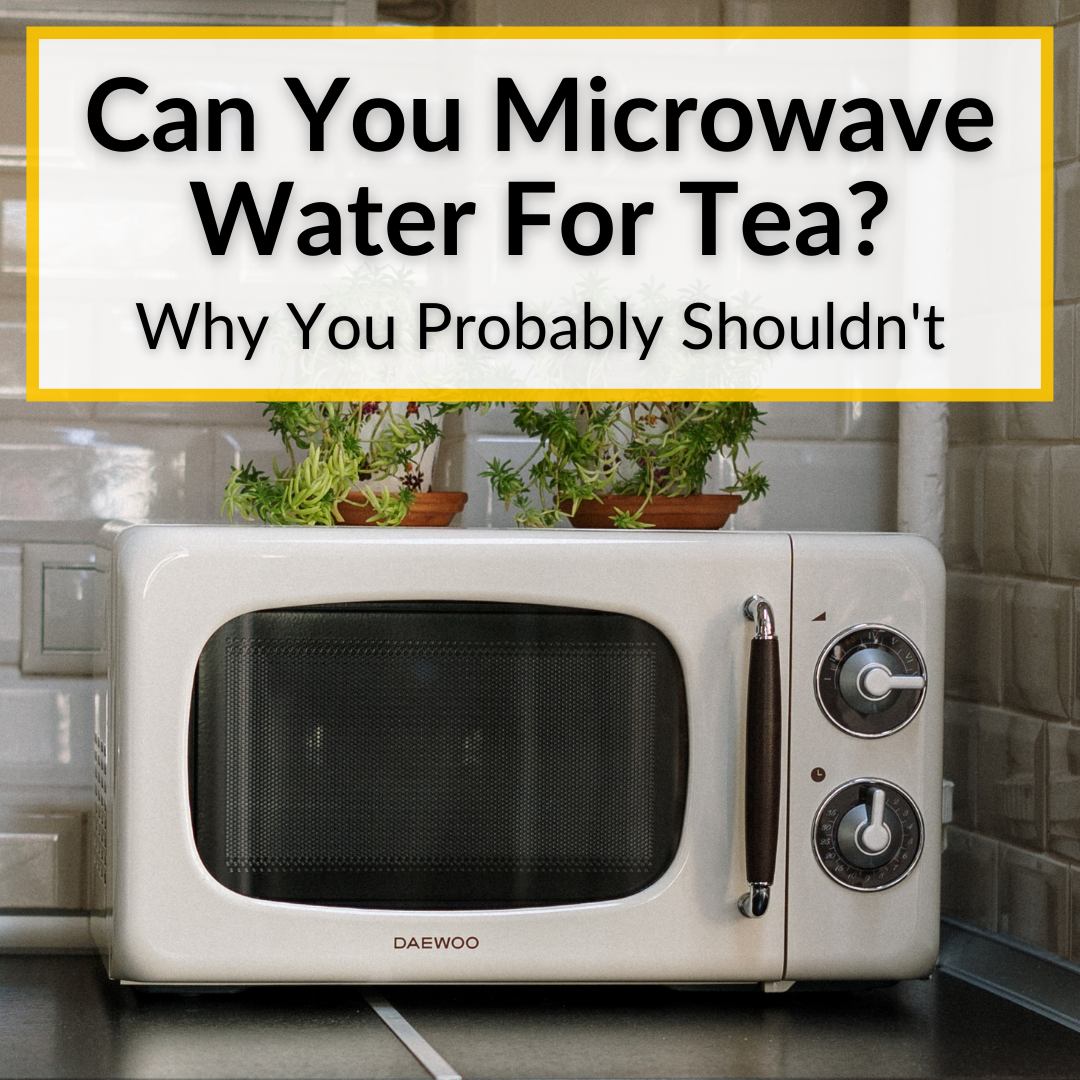 All you need to make a cup of tea is tea leaves and hot water.
All you need to make a cup of tea is tea leaves and hot water.
Some people believe you need boiling water, but that is only true for some teas.
But no matter the type of tea and the temperature of water you need, you will need to heat the water to the correct temperature somehow.
And the microwave presents itself as an obvious solution, if you don’t have an electric or stovetop kettle.
But is it a good solution?
Can you microwave water for tea or is it best to stick to one of the standard methods for heating water?
Keep reading to learn why the microwave should be a last resort only. We’ll cover everything you need to know about heating water for tea in a microwave.
Table of Contents
Can You Microwave Water For Tea?
Yes, you can microwave your water for tea. But it is not a good idea. The microwave does not heat evenly or accurately and will result in an inferior cup of tea, with a less-than-desirable flavor.
Honestly, is it really that hard to just heat water on the stove? Even better, get an electric kettle. They don’t cost much at all and they make your life so much easier. They heat water faster than a microwave, too.
The microwave might seem to work fine, but there are a number of issues with its use to heat water for tea. Yes, my first and last issues is perhaps a bit snobbish. But the others are concrete problems that affect the quality of your tea (and even your safety).
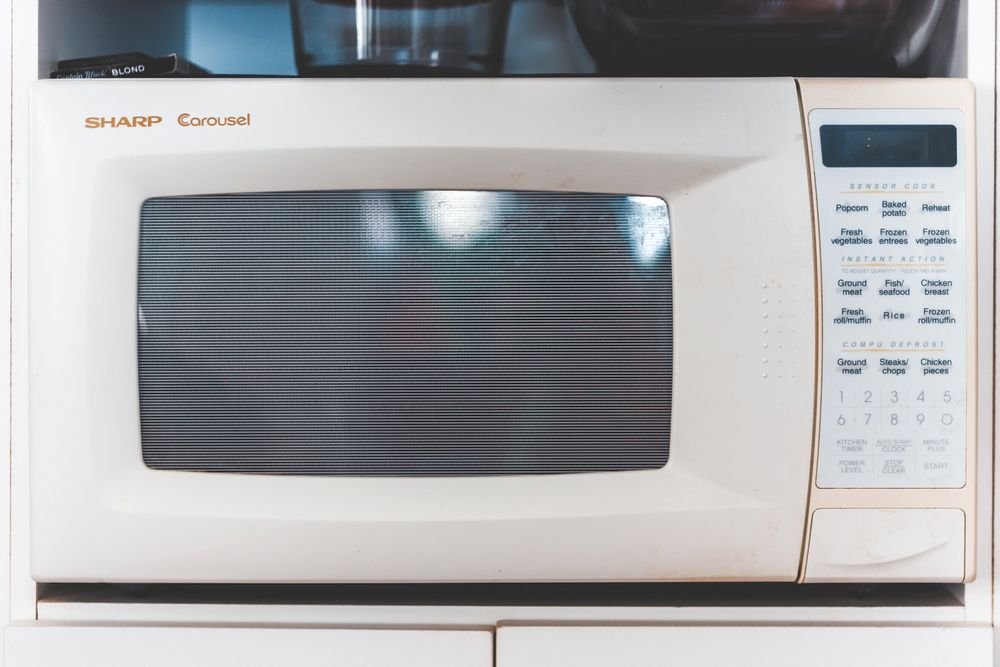
Why You Should Not Microwave Your Water For Tea
Microwaving your tea water is not a good idea for many reasons. Sure, you can do it, if you are in a hurry and just want a quick cup of hot tea (and you don’t have an electric kettle).
But if you use it, know that you are going to have an inferior cup of tea that is not going to taste nearly as good as a properly brewed cup. Let’s take a look at the biggest problems with using a microwave.
Goes Against The Spirit Of Taking Tea
Drinking tea is a centuries-old tradition in many cultures, especially in Asia. The idea of sitting down and having tea is a ceremonious and deliberate calming down in the middle of the day with family or friends.
In many Asian cultures, the idea of having tea formally is an entire act that has its own rules, traditions, and even attire. Without going into all the nuances of the Asian tea ceremonies, you should know that the whole idea of it is to slow down, be deliberate in your actions, and relax.
In many middle eastern cultures, it is quite similar. Taking tea is something you do slowly with a group of friends. The tea is presented, brewed, served, and shared.
This practice has been going on for thousands of years all over the world. There are many different traditions involving drinking tea with different ways to do it, but they all share one common thread. You do it slowly and use it as a way to relax and destress.
Using a microwave goes against the whole idea of tea. It is a fast, loud way to heat water quickly, because you don’t want to slow down and boil some water. You lose one of the most enjoyable aspects of having a cup of tea.
Results In Uneven Temperatures In The Cup
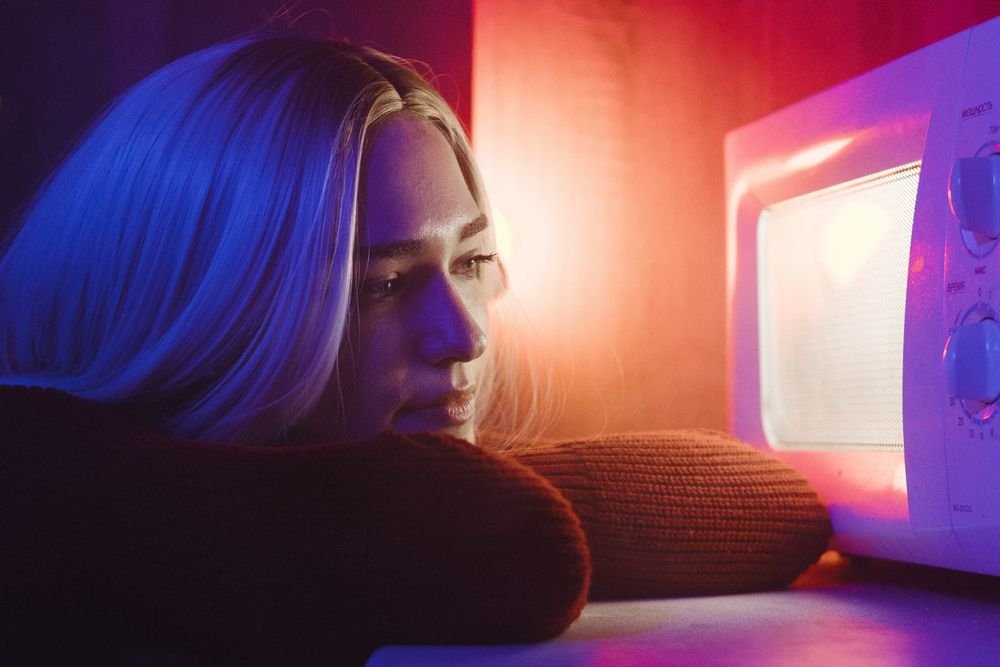
The way a microwave works results in it never heating your water unevenly. This is the same with food or anything else you place in a microwave to be heated.
The microwave emits small, short electrical waves that can not penetrate your water or food all the way. This is why when you have frozen meals, they always instruct you to stir or rotate, or both, halfway through the cooking cycle.
They say this because the short waves cannot fully get through the food or water, so you need to turn the item to expose a new surface to the short electrical waves.
You will notice when you microwave food, it is almost always cold in the middle or very overcooked in one spot and not quite cooked in another spot. This happens with water inside a cup as well. Microwaves are not good at cooking anything. They are just fast at it.
No Control Over Steeping Temperature
Tea is a fickle beast. If you are a tea aficionado, you know certain teas need to be steeped at certain temperatures. If you look at the box of tea it will have the brewing instructions and the ideal water temperature written on it.
Microwaves just know how long you want them to cook something, but they have no idea what temperature your water will be when it is done.
The only way you know your water is boiling is to look inside and see. Knowing water is boiling does not tell you the temperature, though.
When you boil water, it gets heated from the bottom of the pan or pot, and the heat waves go up, heating the contents of the pan or pot evenly.
You can use a thermometer to see the temperature of the water and when it is right you pour it over your tea leaves. Once you know the right temperature, you can remember the setting on your oven and repeat the process.
Even better, use an electric kettle or water boiler with a variable temperature setting.
With a microwave, it is more of a guessing game. Most of the time the water you boil in the microwave is going to be way too hot for tea and you will have to let it sit for a while before you can use it.
Otherwise you could experience the superheated water phenomenon, which may end up burning your skin and will most certainly destroy the taste of your tea. And you can forget about correctly brewing more delicate white or green teas.
The Superheated Water Phenomenon
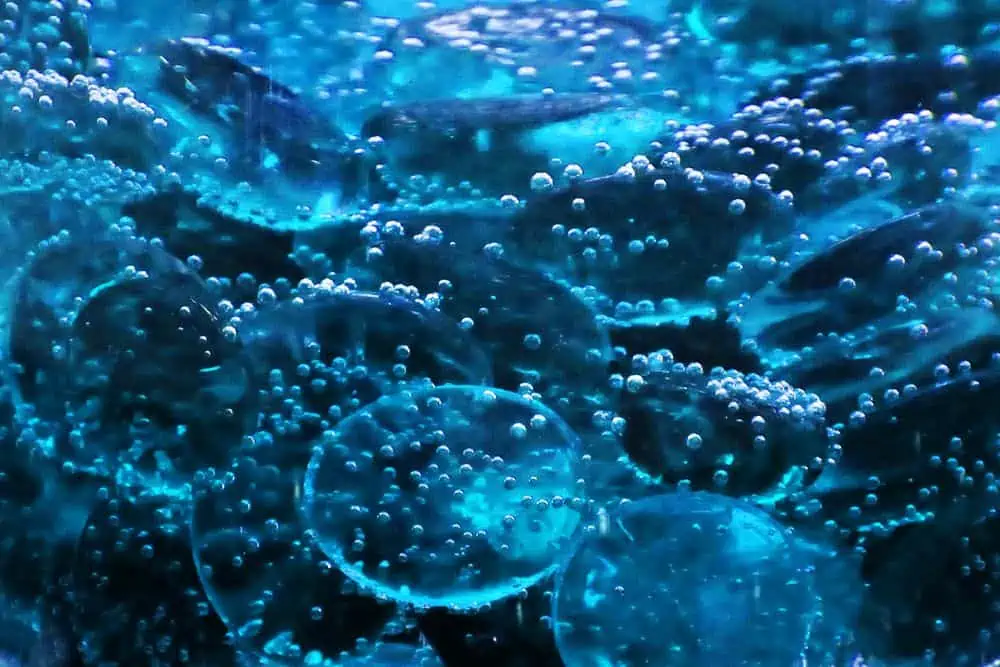
There is something that can happen with microwave-boiled water called the superheated water phenomenon. This is when the water is actually boiling and very hot, but is not bubbling and appears to be calm and cool.
However, when you agitate the surface of the water, suddenly the water bubbles up and rises, spilling piping hot water on your hands and counter or table.
This happens because of the way microwaves heat the water. I don’t fully understand it personally, but rest assured, it is a real thing that actually happens.
I have had it happen to me before when microwaving water for tea in a hotel room. At the time, I had no idea it was a common phenomenon that happens to other people that boil water in the microwave, too.
Tradition
If you are a tea traditionalist, you will not like the idea of microwaving your tea water. For hundreds of years, people have been boiling water in a pot on a fire and then having their tea.
As time went on and people got ovens and stovetops, boiling water on a smaller kettle on a stove became a replacement for the fire and big iron pots they used to use.
As a traditionalist, you are not being 100% true to tradition, if you use a stovetop to heat your water, but you are still much closer to the tradition than if you use a microwave.
Microwaves are a fairly recent invention and when you use them, you are not using fire or any normal heat source. That is too far removed tea tradition.
The closest you can get to the traditional way of heating water for tea is to use a gas stovetop which produces actual flames that are used to heat your tea water. The best would be to do it with a fire pit and big black pot, but unless you live in a rural area, this may turn some heads in your city.
That said, any method that heats water evenly still complies with tradition well enough, in my opinion. That is why I always use an electric water heater. They are simply faster than a stovetop and mine allows me to select the desired temperature, which is great for green teas, white teas, and other types that should not e brewed using boiling water.
Is It Bad To Microwave Water For Tea?
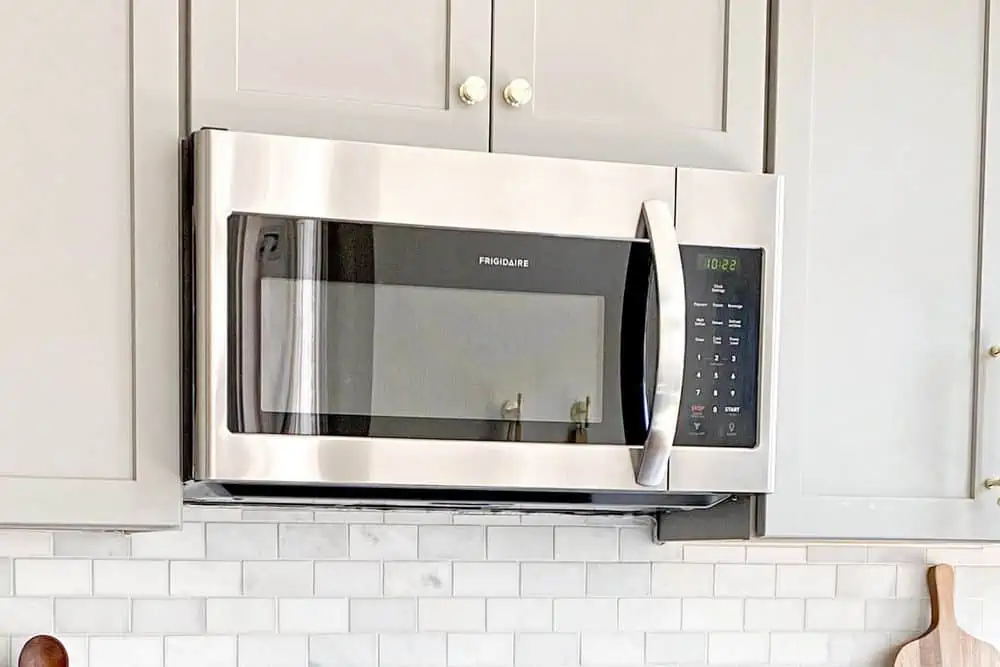
It is not bad for you at all. Heating your water in a microwave works just fine. The problem is that microwaves heat unevenly and that you have no control over the temperature. This makes them unsuitable for tea, but they still work in a pinch.
How Long To Microwave Water For Tea
The best I can tell you is that it will take between 1 and 3 minutes for water to boil in the microwave. It is best to pause it every 30 seconds so you can give the water a quick stir to distribute the heat evenly.
The reason for this huge range is that it varies a lot from one microwave to the next, but also depends on the quality of the water and the altitude and climate in your area.
That’s why, if you do decide to heat your tea water in a microwave, you are going to face the problem of choosing how long to heat your water.
You’ll just have to try it and see how long it takes for water to boil with our model of microwave and the altitude and climate in your area. After the first time, you’ll know how long you need to do it in the future.
The main problem is that boiling water in the microwave tends not to visibly bubble up like it would on the stove, making it difficult to know when it is actually boiling. If you skipped the section above on superheated water, read that.
Reheating Tea In Microwave: Good Idea?
In this case, the tea is already brewed, so microwaving it won’t affect that process. But it certainly will not taste anywhere near as good as it did when you first brewed it. I would just drink the tea cold, to be honest. Or make a fresh cup, if you want hot tea.
Microwaving Water For Tea: Final Thoughts
It is possible to microwave water for your tea and it is not going to harm the water at all. But it is far from ideal.
The water won’t get heated evenly (even if you pause it to stir several times) and you will not be able to get close to the ideal temperature. There is also the physical danger of superheated water.
If you have no other option, go ahead and use the microwave. But if yo are considering it as a regular method for heating your water, I’d recommend buying a tea kettle instead.
Electric tea kettles are fast and convenient and you can get good ones for under $25. Good whistling stove top kettles are a bit slower, but they cost even less.
What temperature boiling water is?! Is that a serious concern!? The temperature of boiling water is the same, regardless of method of heating! It is dependent on air pressure, but neither ketttle nor microwave affect that.
Water begins boiling at 100 degrees Celsius, but it continues boiling when the water heats up more. So it could be well over 100 by the time you take it out of the microwave.